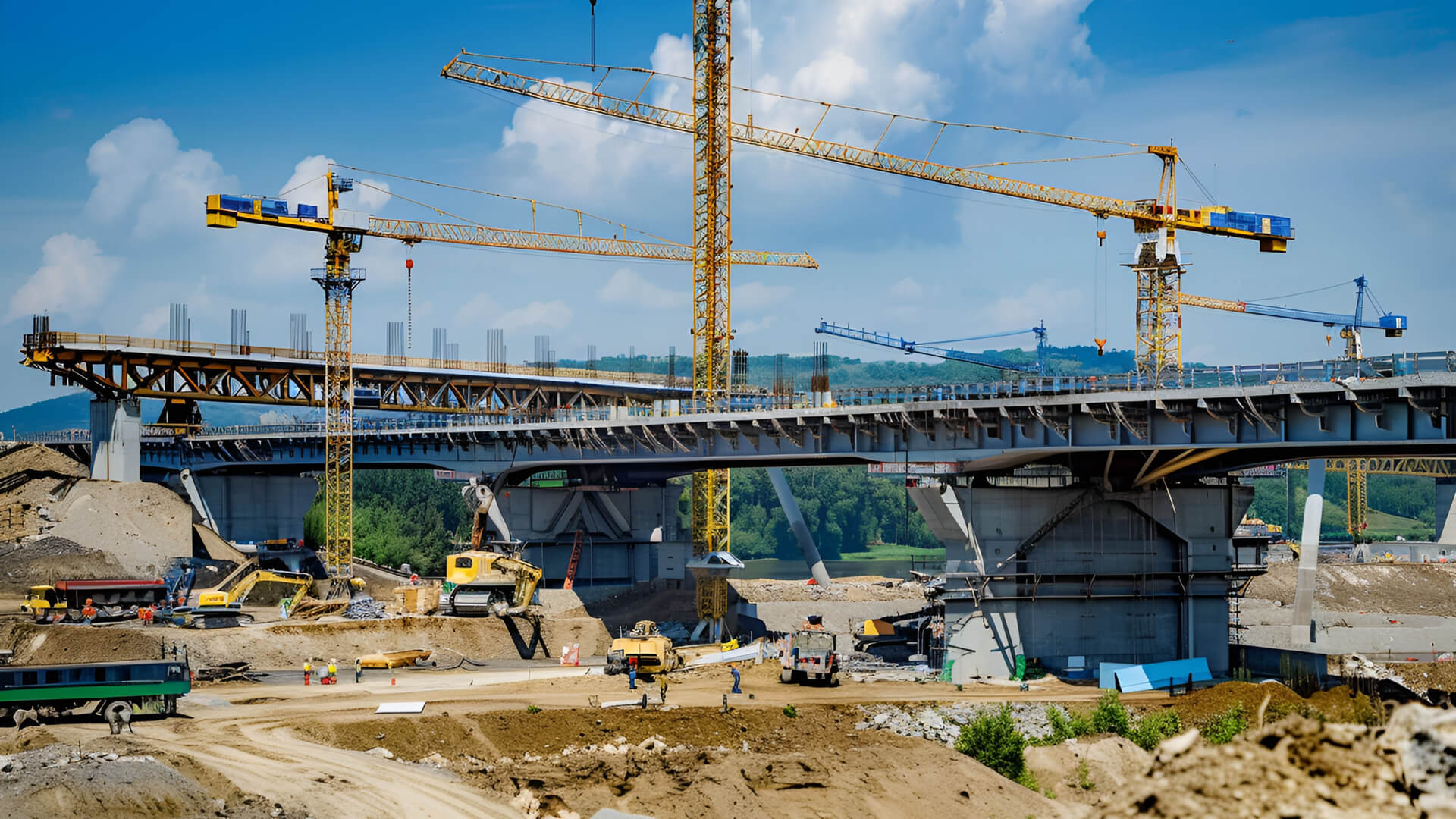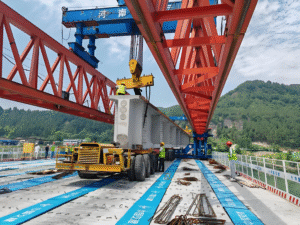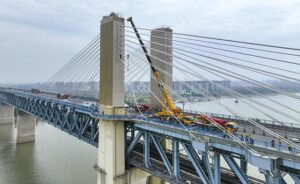Introduction
Cable-stayed bridges are among the most visually striking and structurally efficient bridge designs in modern civil engineering. These bridges rely on prestressed products to ensure stability, durability, and resistance to dynamic loads. From high-tensile steel strands to post-tensioning systems, prestressing technology plays a pivotal role in constructing long-span cable-stayed bridges.
In this 5,000-word comprehensive guide, we will explore:
What prestressed products are used in cable-stayed bridges?
How are these products applied in construction?
Why is prestressing essential for structural integrity?
Latest advancements in prestressing technology.
By the end of this article, you’ll have a deep understanding of how prestressed materials contribute to bridge safety, efficiency, and longevity.
1. Key Prestressed Products in Cable-Stayed Bridges
1.1 Prestressing Strands (7-Wire Steel Strands)
Prestressing strands (typically conforming to ASTM A416 or BS 5896) are the backbone of cable-stayed bridges. These high-tensile steel strands consist of seven wires (six outer wires spiraled around a central wire) for maximum strength and flexibility.
Applications:
Stay cables (primary load-bearing elements).
Deck post-tensioning (to prevent cracking under heavy loads).
Anchorage systems (to secure cables to pylons and decks).
Why Use 7-Wire Strands?
High tensile strength (1,860 MPa or higher).
Excellent fatigue resistance (critical for long-span bridges).
Corrosion resistance (when coated with epoxy or galvanized).
For more details, refer to the PCI (Precast/Prestressed Concrete Institute).
1.2 Post-Tensioning (PT) Systems
Post-tensioning is a method where steel tendons are tensioned after concrete has hardened, compressing the structure and enhancing load-bearing capacity.
Types of PT Systems in Cable-Stayed Bridges:
Bonded PT Systems: Tendons are grouted inside ducts for corrosion protection.
Unbonded PT Systems: Tendons are coated with grease and sheathed in HDPE for flexibility.
Multi-Strand PT Systems: Used in bridge decks and pylons for heavy-load resistance.
Applications:
Bridge deck reinforcement (preventing deflection under traffic loads).
Pylon strengthening (resisting buckling forces).
Segmental bridge construction (connecting precast segments).
For technical specifications, visit VSL International.
1.3 Stay Cables (Parallel Wire & Strand Systems)
Stay cables are the most visible prestressed elements in cable-stayed bridges, transferring loads from the deck to the pylons.
Types of Stay Cables:
Parallel Wire Cables (PWS): Multiple steel wires bundled together.
Strand Cables (PSS): Composed of multiple 7-wire strands.
CFCC (Carbon Fiber Composite Cables): Lightweight, corrosion-resistant alternative.
Protection Systems:
HDPE (High-Density Polyethylene) Sheathing – Prevents corrosion.
Wax or grease injection – Additional moisture barrier.
For more on stay cable technology, check DYWIDAG.
1.4 Prestressed Concrete Girders & Segments
Precast prestressed concrete girders (I-beams, U-beams, box girders) are used to speed up construction while maintaining structural integrity.
Advantages:
Faster construction (prefabricated off-site).
Higher load capacity (due to prestressing).
Reduced cracking (compression counteracts tensile forces).
Segmental Construction Technique:
Match-cast segments are aligned using epoxy joints and PT tendons.
Balanced cantilever method ensures stability during assembly.
1.5 Anchorage Systems
Anchorage systems secure prestressing strands and cables to the bridge structure.
Types of Anchorages:
Dead-End Anchors (fixed at one end).
Live-End Anchors (adjustable for tensioning).
Couplers (connect multiple tendons for continuous reinforcement).
Key Manufacturers:
Freyssinet (www.freyssinet.com)
BBR Network (www.bbrnetwork.com)
2. How Prestressed Products Are Used in Construction
2.1 Stay Cable Installation Process
Strand Fabrication: High-tensile steel strands are manufactured and coated.
HDPE Sheathing: Strands are encased in protective ducts.
Tensioning: Hydraulic jacks apply force (up to 80% of ultimate tensile strength).
Anchoring: Strands are locked into position using wedge systems.
2.2 Post-Tensioning of Bridge Decks
Duct Installation: Steel or plastic ducts are placed before concrete pouring.
Concrete Casting: After curing, tendons are threaded through ducts.
Tensioning & Grouting: Tendons are stressed, then grout is injected for corrosion protection.
2.3 Pylon & Pier Reinforcement
Vertical PT tendons are used to reinforce tall pylons against wind and seismic forces.
External PT systems can be retrofitted for additional strength.
2.4 Segmental Bridge Construction
Precast segments are transported and assembled on-site.
Epoxy joints & PT tendons ensure seamless connections.
3. Why Prestressing is Critical for Cable-Stayed Bridges
3.1 Enhanced Load-Bearing Capacity
Prestressing reduces tensile stresses, allowing longer spans without excessive deflection.
3.2 Crack Control & Durability
Pre-compression prevents cracks, extending the bridge’s service life.
3.3 Corrosion Resistance
HDPE sheathing, epoxy coatings, and grouting protect against environmental damage.
3.4 Cost & Time Efficiency
Precast segments & PT systems reduce on-site construction time.
4. Latest Advancements in Prestressing Technology
4.1 Carbon Fiber Reinforced Polymers (CFRP)
Lighter and corrosion-resistant alternative to steel strands.
4.2 Smart Stay Cables with Sensors
Fiber-optic sensors monitor stress and fatigue in real-time.
4.3 3D-Printed Prestressed Components
Automated fabrication for complex bridge elements.
For cutting-edge research, visit fib (International Federation for Structural Concrete).
5. Conclusion
Prestressed products—such as 7-wire strands, post-tensioning systems, stay cables, and anchorages—are indispensable in cable-stayed bridge construction. By leveraging these technologies, engineers achieve longer spans, higher durability, and cost-effective solutions.
Key Takeaways:
✔ Prestressing strands provide high tensile strength for stay cables.
✔ Post-tensioning systems reinforce bridge decks and pylons.
✔ Stay cables must be protected against corrosion.
✔ Anchorage systems ensure secure load transfer.
For further reading, explore ASBI (American Segmental Bridge Institute).






